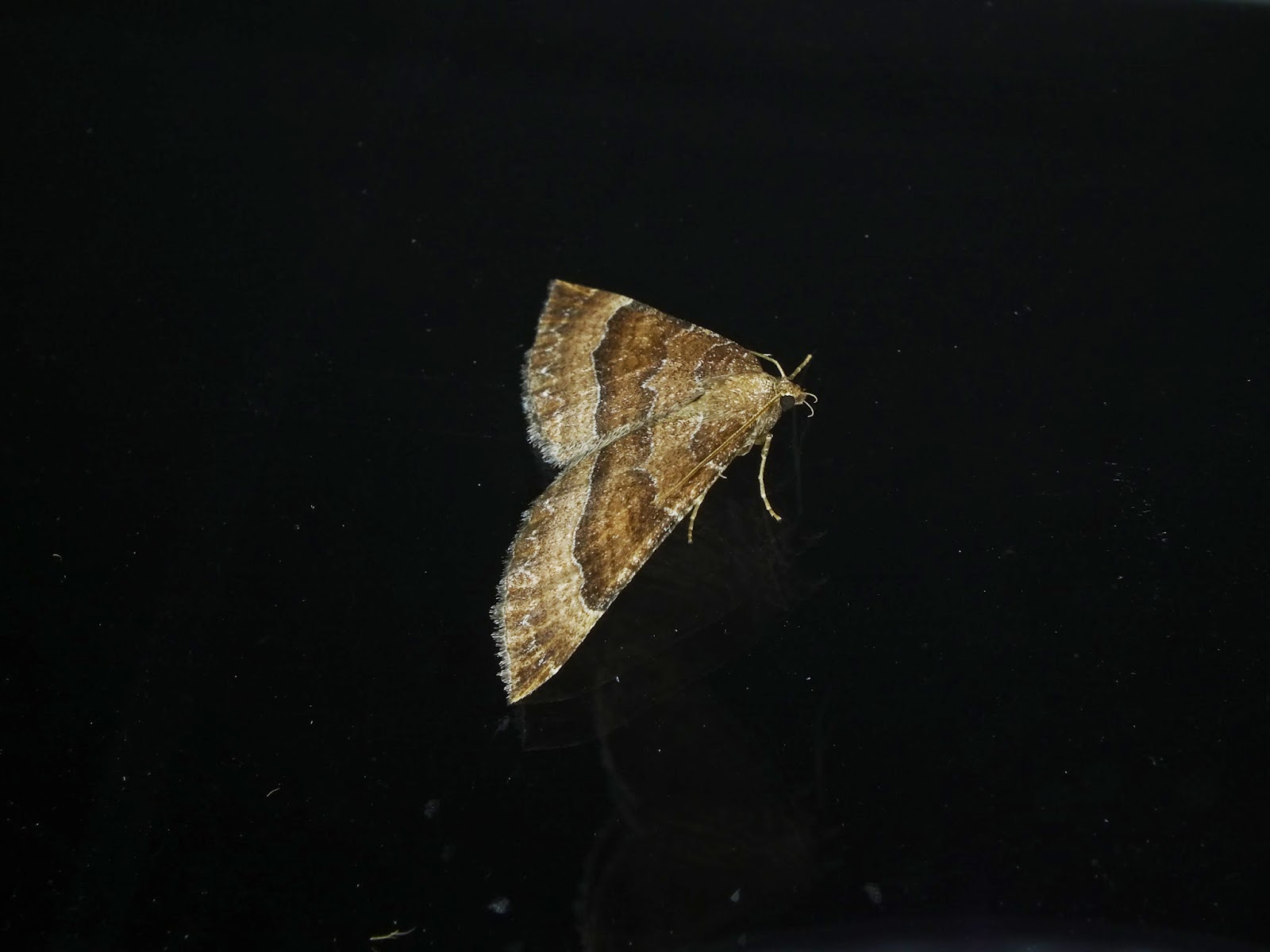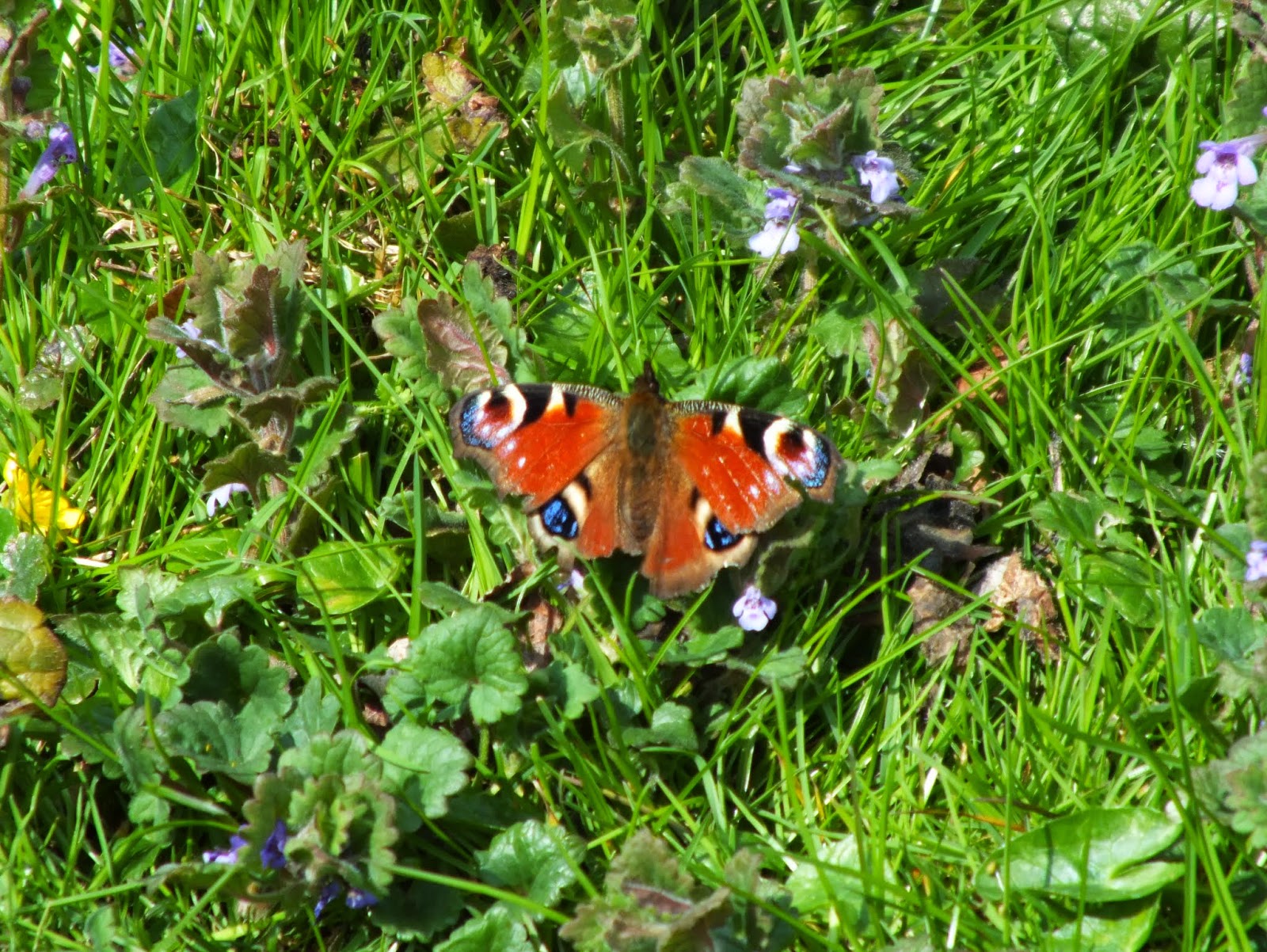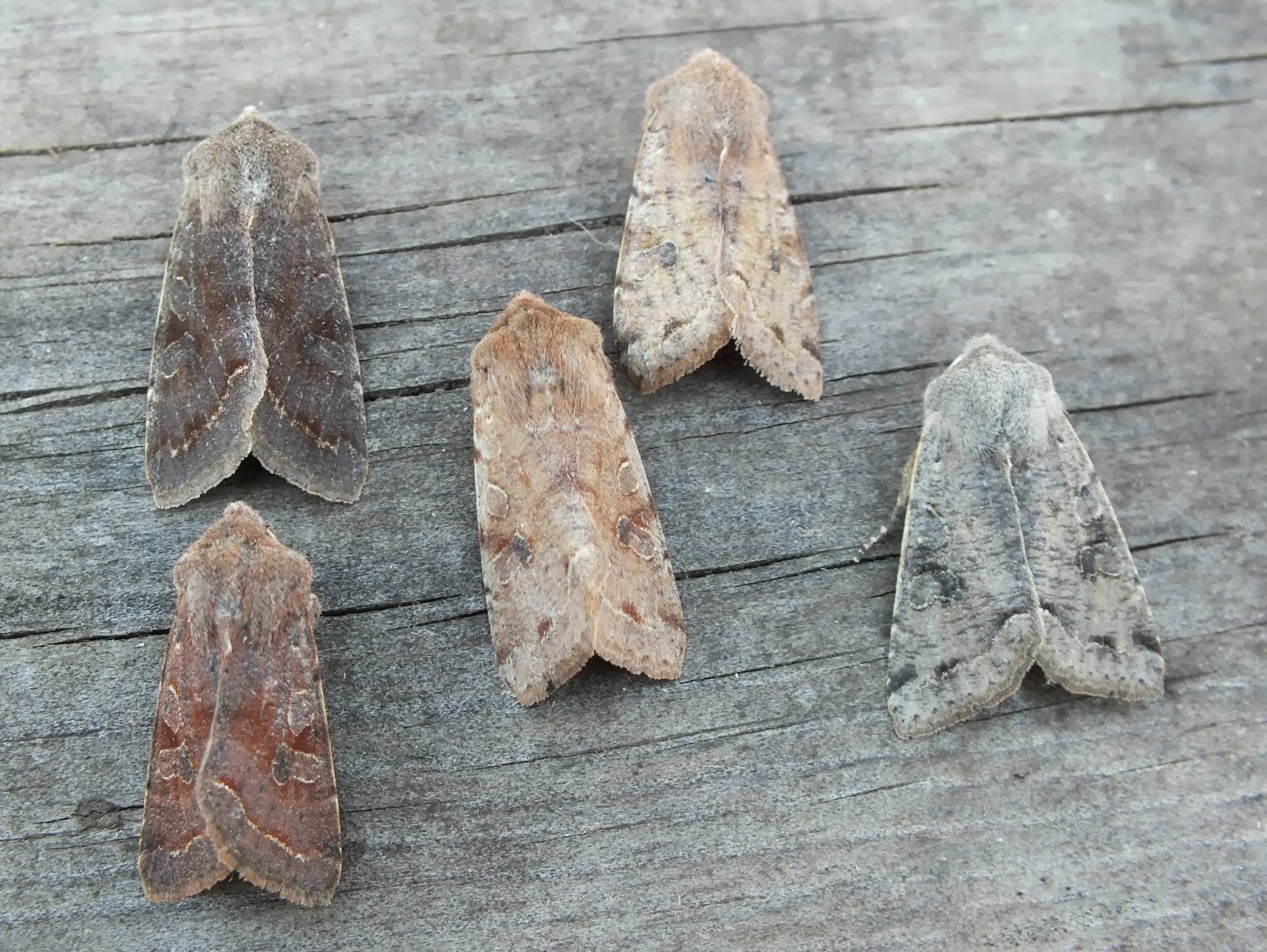Tuesday, 14 October 2014
Sixty!
Friday, 10 October 2014
Windy but worth it
..and the second Grey Shoulder-Knot.
Sunday, 5 October 2014
And the record falls
In a little over an hour, I noted 27 moths of 12 species, with three new for the season. That takes the total in twenty visits since the 20th August to 55 species, taking us past last year's effort of 53. We are well on target to get to sixty, but I would settle for 54 mind, if that was a Merveille du Jour!
Totals as follows:
Angle Shades - 6
Common Marbled Carpet - 3
Grey Shoulder-knot - 1
Lunar Underwing - 5
Yellow-line Quaker - 1
Dusky-lemon Sallow - 1
Square-spot Rustic - 2
Brick - 4
Large Yellow Underwing - 1
Beaded Chestnut - 1
Deep-brown Dart - 1
L-album Wainscot - 1
Saturday, 20 September 2014
Night time macro photography for beginners
However, last week, I dusted off the cheap (less than £20) ring-flash I had bought a few months ago and decided to give it a try whilst out recording moths on ivy. Here's a Large Yellow Underwing taken on auto setting as an example:
On Wednesday, I invited Steve Plume to join Tony and I to see what he could manage. His ring-flash rig cost a little short of £500! He gave me a few handy hints about various settings (which for a change I actually understood). His snort of derision when he saw the 'auto' setting said it all. Here are a couple of images post-5 minute masterclass
Saturday, 30 August 2014
Ivy League - season three
"Everything is early this year" is the naturalists refrain, in complete contrast to last year - remember the non-existent spring?
Tonight was the fifth night the Stutton Moth Group (membership of two) had roamed the lanes checking the ivy flowers since the 20th August. Last year the flowering didn't start until the 12th September.
With flowering so early, we have been picking up a few late summer species, but the commonest three remain Large Yellow Underwing, Square-spot Rustic and Angle Shades. Intriguingly, Flounced Rustic, which would be verging on abundant in the moth trap, is a species we have never recorded on ivy.
Last year we recorded 53 species around the village on ivy, so far this season we are on 28. New species tonight were Small Dusty Wave and a tatty Cloaked Minor. If we continue along these lines we should break the 60 barrier.
This really highlights how import ivy is as a nectar source for moths. By day, a seemingly endless stream of invertebrates descend on their flowers and this carries on at night.
Sunday, 13 April 2014
Slivers of gold and a dessicated weasel
Birds were going to be a bit of a side issue. I had my bird fix earlier in the morning with a summer-plumaged Slavonian Grebe in Holbrook Bay and my first Willow Warbler of the year near Stutton's very own Wolves Wood (not the RSPB one near Hadleigh).
Over the last couple of days, I have discovered a smart little moth Eriocrania subpurpurella. It's a shiny little gold chap, the larvae of which mine oak leaves. It is quite common, but understandably over-looked. Now I have seen it once, they keep popping up whenever I find myself under an oak tree with a bit of herbage around it for the males to lek on. Well that is what they seem to be doing when the sun is out. Some of the day-flying micros really do warrant a closer look.
When we got down to Stutton Ness my attention was drawn to the bare soil at the base of a fallen oak. As part of my tentative steps towards learning a bit more about bees and wasps, this seemed a likely spot.
Sure enough, my instincts proved correct. There was a bee-fly charging around (with apologies for image quality - just a point and shoot job):
Friday, 4 April 2014
And so it begins.
Sunday, 9 March 2014
A Drab affair?
Monday, 3 March 2014
Redpolls
An email last night from fellow Stour Estuary-ite Richard Stace about a Mealy Redpoll at Larchwood Hide on Alton Water had my full attention. The drug that is patch birding needs feeding and recent dips on Med Gull and Black-necked Grebe needed dispelling.
So around 7.30am this morning, joined by Tony Fox, we strolled down in hope and expectation. Before we got to the hide, Richard had picked our prize up in some over-mature scrub, with a nice Lesser nearby for comparison. When we got to the hide, the first redpoll on the feeders was another (or the same) Mealy, again obligingly joined by a Lesser to assuage any doubts. A bonus came with a corking male Brambling - complete with bright orange breast band and darkening head.
With the morning brightening, coming back through Rabbet's Wood, the delicate song of Treecreeper held our attention. We dropped Tony off and when I got home, there was a message for me to get back there quick as he had one of these on his feeders:
Saturday, 4 January 2014
Mr Paterson and ancient woodlands
The man on the street, perhaps understandably, may think it is a very sensible proposition to plant x number of new trees for every tree lost from an ancient woodland, but that is an appalling simplification for such a rich and complex habitat. There are a wealth of plants that can only be found in ancient woodlands as well as animals that have a prediliction for old woods. Citing two local examples there is Limax cinereoniger (a slug) and Propolydesmus testaceus (a millipede). What about the soil structure and the inter-relations that holds with the flora growing from it?
Friday, 3 January 2014
Harrier heaven
Not much was happening at Alton Water, there was no sign of the Black-throated Diver and the Yellowhammer flock along Alton Hall Lane was not showing either. The south-westerly still had a bit of oomph about it as I got down to Stutton Mill, but the sky was the best kind of blue and the sun was on my back. Red-breasted Mergansers were flirting out in the main channel: 41 of them, and then one of the Great Northern Divers that had been found a few days back hove in to view, followed by the second ten minutes later. The 75th species for the year in the village. Just Red-throated, White-billed and Pacific to go then for the patch. Red-throat being the scarcest regular diver on the estuary.
Feeling that my morning could not get much better, I stood at Stutton Mill Sluice (the parish boundary) for a scan of the reeds, fields and trees as it was approaching Buzzard o'clock (11am). There were a few crows bouncing up and down distantly over Brantham and I was delighted to pick up a female Marsh Harrier among them, rather than the expected Buzzard. A short time later, it popped up close by before disappearing behind some poplars. As I dropped my bins, my eyes fell upon a male Hen Harrier no more than 30 metres away. Unbelievable! It floated over the 'beet field before shaking up the saltmarsh roost. A wisp of 15 Snipe was a bonus from it's marauding. Hens that do make an appearance around the estuary are invariably ring-tails and normally don't come anywhere near me. Frustratingly for Chris, he had gone off to do some chores and missed it by minutes. Hopefully it will linger and next time I will not leave my camera in the car.
I did take the camera round to Mistley in the afternoon, where the godwits and Goldeneye were putting on a show.
Wednesday, 1 January 2014
New Year's Day on the patch
A hooting Tawny Owl at 5.18am was first up from the comfort of my bed, with a Robin second on the list as I set foot outside at 7.30. The honourable thing to do first was to check Alton Water to see if the well-settled Black-throated Diver was still in place. It was.
Standing by the dam as the morning sky reddened allowed me to aurally tick a few songbirds that otherwise would have been a pig to track down given the weather and the fact that my walking range is about 100 metres max at the moment. As I left the dam at 8.15 I was up to 36 species, missing a couple of dabblers in Gadwall and Shoveler. The church failed to turn up a Goldcrest, but a couple of Redwing were blown over and a rattling Mistle Thrush were useful additions to the day list.
Next stop was Alton Hall Lane for another check of the reservoir and any plastic geese. Last year a Pink-footed Goose got sucked in with the Greylags. This year I couldn't even find the flock. An unexpected bonus came in the form of a 50-strong flock of Yellowhammers in some stubble. I can normally bank on a calling bird at the end of the lane, but this sort of number was a real surprise. I shuffled a few metres in to the field to see what else was among them and had the briefest snatch of a call that made me think tree sparrow, but I couldn't be 100%. Last winter, some tree sparrows spent a few months in a garden within a stones throw of the field I was stood by.
I was down to Stutton Mill just before 9.30, two hours before high tide. The estuary was almost a moderate sea state, making it difficult to pick out birds in the channel. The roost was well occupied though until a Peregrine came in and razzled things up a bit.
























































